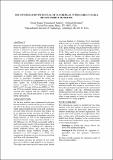The optimization potential of floor-plan typologies in early design energy modeling
Author(s)
Dogan, Timur; Saratsis, Emmanouil; Reinhart, Christoph
DownloadReinhart_The optimization.pdf (2.715Mb)
OPEN_ACCESS_POLICY
Open Access Policy
Creative Commons Attribution-Noncommercial-Share Alike
Terms of use
Metadata
Show full item recordAbstract
Based on a consensus in the field that energy modeling should be applied as early as possible in the design process to maximize its impact on important design decisions, multi-zone thermal simulations are now used with increasing frequency in the earliest design stages. In the massing model phase, when the interior subdivision of a building is yet unknown, zoning standards such as ASHRAE 90.1 Appendix G assist modelers by prescribing a subdivision scheme with core and consistently deep perimeter regions along the facade. This scheme, however, hardly ever resembles actual interior space subdivisions and thus raises the question of accuracy and usefulness of such simulations. This manuscript hence analyzes the significance of interior subdivisions on simulation results by thoroughly comparing the energy use intensity [EUI] levels for a representative set of floorplans against the ASHRAE-prescribed zoning scheme. A sample set of 1200 simulations reveal a RMSE of 15% for total EUI but also RMSE of 175% and 105% for predicted heating and cooling loads are reported. This suggests that the ASHRAE zoning scheme has only limited applicability for early design energy optimization.
Date issued
2015-12Department
Massachusetts Institute of Technology. Department of ArchitectureJournal
Proceedings of BS2015: 14th Conference of International Building Performance Simulation Association
Publisher
International Building Performance Simulation Association (IBPSA)
Citation
Dogan, Timur; Saratsis, Emmanouil and Reinhart, Christoph. "The optimization potential of floor-plan typologies in early design energy modeling." Proceedings of BS2015: 14th Conference of International Building Performance Simulation Association, December 7-9 2015, Hyderabad, India, International Building Performance Simulation Association (IBPSA), December 2015
Version: Author's final manuscript